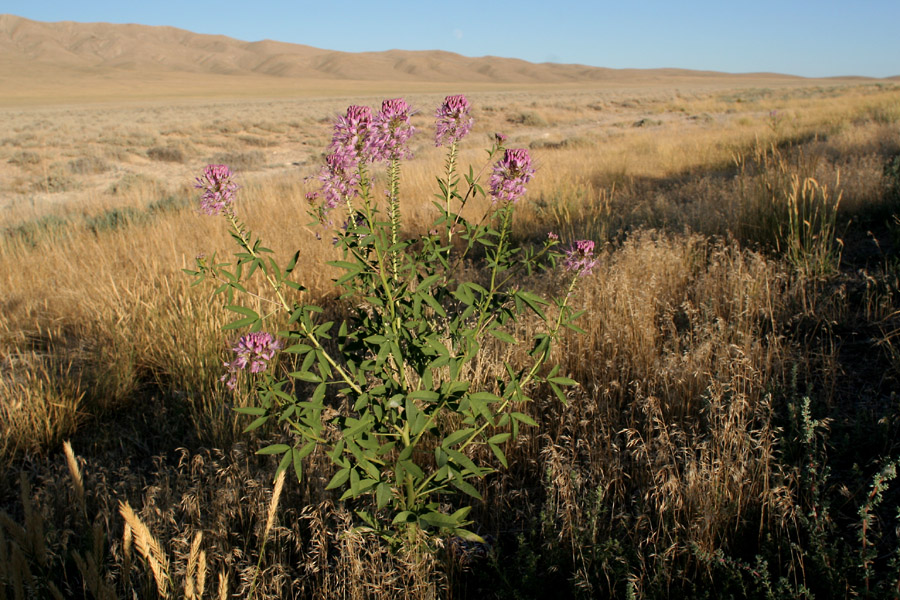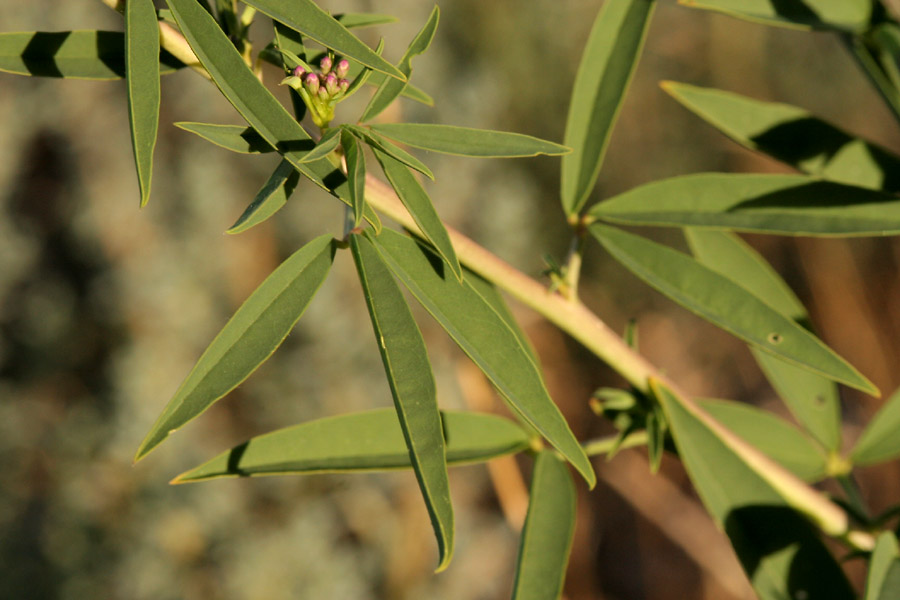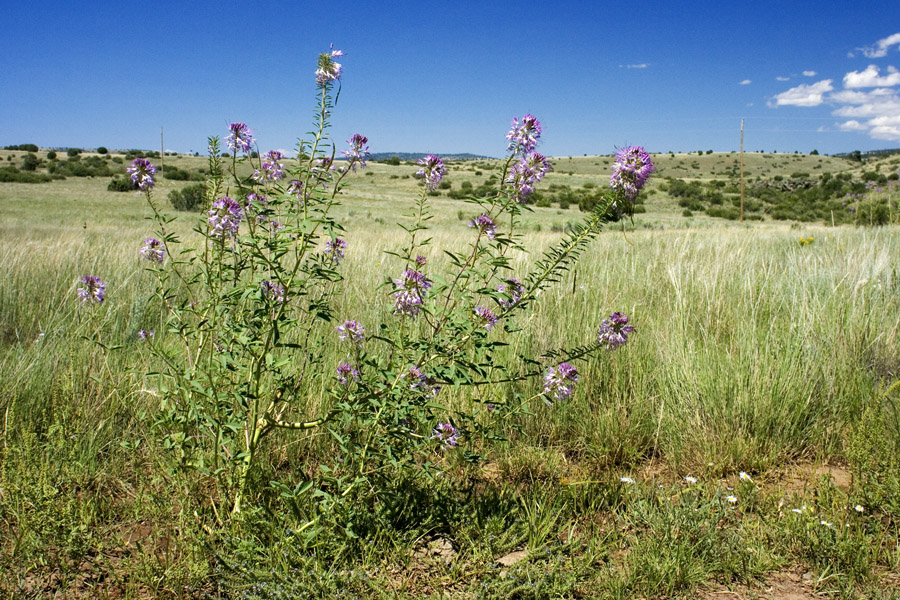Selected Plants of Navajo Rangelands
Beeplant, Rocky Mountain

Beeplant is an erect, branched annual that grows to about three feet. tall. It is in flower from July to August, and reproduces from seed. Dozens of bright, pink to purplish flowers are crowded into rounded or rather elongate spikes. Fruit is a narrow capsule up to two inches long that bears several to many dark, ovoid seeds. Leaves are in groups of three on long petioles. Rocky Mountain beeplant is often found in wastelands, and in lower mountains. It is frost tender. It can grow in semi-shade or no shade and is often found on sandy soil. It has little to no value as forage for livestock and wildlife.
Rocky Mountain beeplant has been used traditionally as food and medicine. Seeds can be harvested and eaten raw or cooked, dried and ground into a meal, then used as a mush or mixed with flour to make bread. The plant can be used to treat fevers and stomach disorders. A poultice made from the pounded, soaked leaves has been applied to sore eyes. A decoction of the leaves has been used as a body and shoe deodorant.
A black dye is obtained by boiling down the whole plant. It is used as paint for decorating pottery.
*Description based on Utah State University Range Plants of Utah description.



©2018 NMSU Board of Regents.
Individual photographers retain all rights to their images.
Partially funded by the
Western Sustainable
Agriculture Research and Education Program
(westernsare.org; 435.797.2257),
project EW15-023.
Programs and projects supported by Western SARE are
equally open to all people.